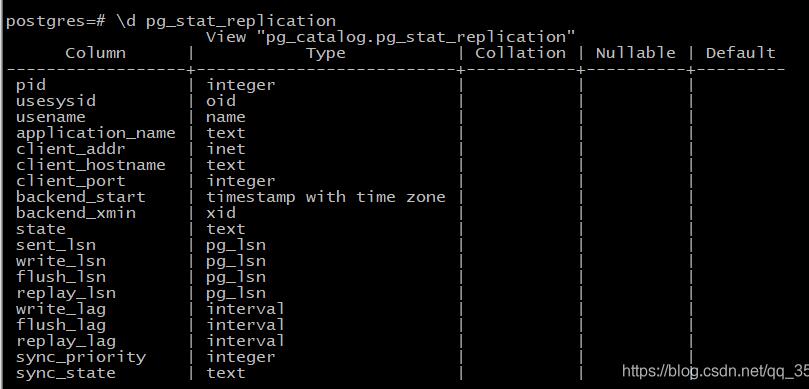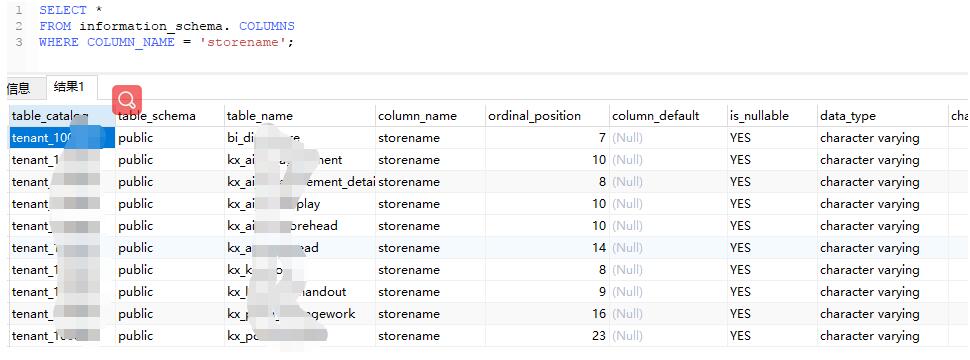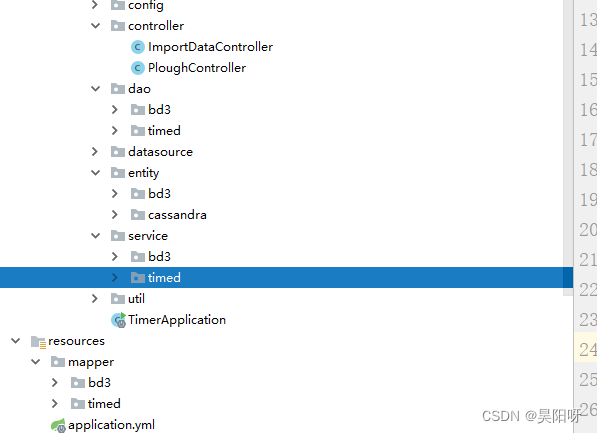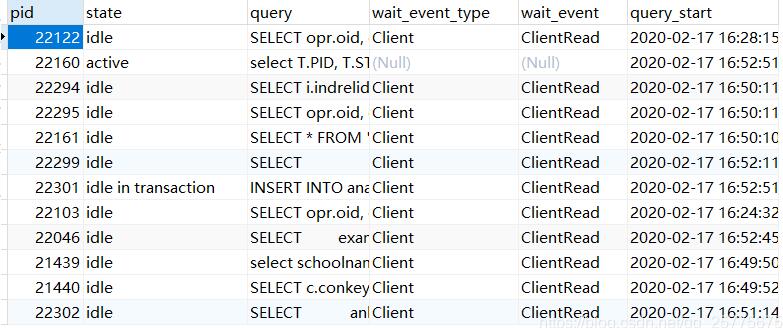前言
PostgreSQL数据库简称pg数据库。
本文主要介绍使用pg数据库时,字符串的一些常用操作。
例如:多个字符串如何连接在一起,字符串如何大小写转换,删除字符串两边的空格,查找字符位置,查找子字符串等。
一、多个字符串如何连接,拼接?
pg的字符串连接使用 ||,注意不是+
1. 将2个字符串hello和word拼接在一起
SELECT 'hello' || 'world';--结果: helloworldSELECT 'hello' || 'world'; --结果: helloworld
2. 将3个字符串hello,空格和word拼接在一起
SELECT 'hello' || ' ' || 'world'; --结果:hello world
3. 将字符串hello和数字123456拼接在一起
SELECT 'hello' || 123456; --结果:hello123456
二、字符串大小写转换
1. 将Hello World,转换成小写
SELECT lower('Hello World');
--结果:hello world
2. 将Hello World,转换成大写
SELECT upper('Hello World');
--结果:HELLO WORLD
三、删除字符串两边的空格
SELECT trim(' hello world ');
--结果:hello world
四、查找字符位置
注:position函数返回值是从1开始的,不是从0开始的下标值。如果返回0表示没找到字符。
1. 查找@在字符串hello@163.com中的位置
SELECT position('@' IN 'hello@163.com');
--结果:6
2. 查找b在字符串hello@163.com中的位置
注: 因为b不在字符串hello@163.com中,返回0,表示没找到字符b。
SELECT position('b' IN 'hello@163.com');
--结果:0
五、查找子字符串
函数:substring(‘hello@163.com’, start, count);
参数1:字符串,参数2:起始位置,参数3:count
注意:start的位置, count值的区别
查询子字符串hello
方法1. start=1,count=5
SELECT substring('hello@163.com',1,5);
--结果:hello
方法2. start=0,count=6
SELECT substring('hello@163.com',0,6);
--结果:hello
六、综合实例
功能描述:将Hello@163.com转成小写,并将域名由163.com换成126.com
Hello@163.com --> hello@126.com
SELECT lower(substring('Hello@163.com',0, position('@' IN 'Hello@163.com')) || '@126.com');
--结果:hello@126.com
SELECT lower(substring('Hello@163.com',1, position('@' IN 'Hello@163.com') - 1) || '@126.com');
--结果:hello@126.com
总结
以上就是今天要讲的内容,本文仅仅简单介绍了pg数据库中字符串的一些常用函数的使用,而pg还提供了大量函数和方法,具体见pg官网https://www.postgresql.org/docs/current/functions-string.html。
到此这篇关于PostgreSQL数据库字符串拼接、大小写转换以及substring详解的文章就介绍到这了,更多相关PostgreSQL字符串拼接大小写转换内容请搜索好代码网以前的文章或继续浏览下面的相关文章希望大家以后多多支持好代码网!





